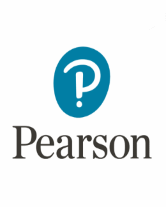Overview:
Students transform their names into many variations. Then they write a story about the variation they select.
Objective:
Students will practice story writing with an emphasis on descriptive language and character portrayal.
Materials:
Paper and pencils for each student
Procedure:
-
Tell students they are going to use anagrams to transform their names and even their identities! Ask them if they know what an anagram is (a word or phrase made by transposing the letters of another word or phrase). Give them these examples of successful anagrams. Discuss how these anagrams enhance the meaning of the original word or phrase.
Butterfly
Flutter byA gentleman
Elegant manClint Eastwood
Old west actionVacation times
I'm not as active Let students practice making anagrams by using a simple word such as "lemon" (melon, no elm) and a more challenging phrase such as "the story" (Shy otter, They sort). Discuss how these anagrams change the meaning of the original word or phrase.
Explain to students that they will be using their first and last names to create anagrams. Tell them not to use uppercase letters. Ask them to come up with as many anagrams of their names as possible in a selected time period. Younger students mights need assistance with this.
-
Once they have found all the anagrams for their names, have students select their favorite one as their new name and write it at the top of a sheet of paper.
Tell students they are going to write a story about the "character" created by their new name. Ask them to think about the story they want to tell about the name. What are some colorful adjectives they might use?
-
Remind students to use descriptive language to make their stories interesting and vivid, and to reveal character through direct statements as well as the character's actions, thoughts, or words. Ask them to think about what the characters in the story do and say that will help readers get to know them.
Encourage students to share their completed stories in small groups. They might enjoy first stacking the stories and exchanging them anonymously to see whether group members can identify each student's original name.
Home Connection
Encourage students to bring their stories home. Students can use what they've learned about anagrams to find anagrams of their family members' names.
Extensions
Explore other Creative Writing ideas and lessons.
Interested students might like to create anagrams for other words and word groups and use them to make riddles.




